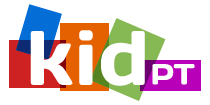

- Call 908 543 4390
- Email
- Dr.Joni Redlich PT,DPT


If you are a parent of a special needs child, you have learned to be very patient when it comes to your child’s progress in therapy programs and how to embrace the baby step milestones along the way. In this video, I will share with you how I had to develop patience too as a young professional, and how I was able to move on from it over a decade ago.
What does that have to do with TMR? Well, when I starting using TMR, I started seeing immediate changes in children’s bodies. What I would have seen change in 6 months, I could see change in 6 visits. In fact each visit had a change I could put my finger on.
Total Motion Release, or TMR, is an approach the physical therapy that the therapists at KidPT apply to all of their sessions. If you’re a current client, you may ask yourself, why have’t I heard of this before? Just like all of the approaches we integrate into our sessions, we don’t usually name them, because they’re all under the lens of pediatric physical therapy and regardless of how we get there, our #1 focus is always your goals and not how we get there.
If your home program involves holding your baby in different twist or crunch positions, or for an older child, playing or sitting in a twist position, you’ve been doing TMR! If your wondering why we’re always asking your child to work their easier side really really hard, this will explain why!
So what is it? As TMR has spread around the world, from here to Australia to India, many therapists and the families they work with have experienced the impact TMR can have on changing how the body moves. And how those changes can come FAST!
As one of just a few Certified TMR- Tots & Teens therapists, I wanted to share a video series on TMR, what it is, how it is used, and how it can spark change in children and adults with various movement challenges. This video is a general video on TMR for pediatrics. The following videos will share with you how TMR is applied with different diagnoses and disabilities.
Do you have a question? Post it below!

Happy Valentine’s Day 2022! This year let’s use Valentine’s Day as a day (5 minutes, 1 hour, whatever you got!!!) to give yourself some LOVE!!!
We know parents are busier than every before and life continues to be unpredictable and filled with curve balls. That’s why we’re here to remind to to practice some self-care for show yourself some love.
Here are some ideas for you! See what speaks to you and try to squeak one into your day this Monday.
I hope this list got you brainstorming about a small part of your day that can be focused on YOU. You are worth it and some self love will help you be your best self for your family too!
The winter olympic games have begun. It is amazing to see what the human body can achieve with consistent hard work and dedication. If you are like us and enjoy watching the games as a family, here are some ideas to bring the winter games to your very own living room and keep your kiddos active.
Ice Skating
Have your child practice their speed skating or figure skating skills with this fun indoor activity. Have your child skate around the house with each foot on a paper plate or a furniture slider or in tissue boxes. Have them practice their twists, turns, and spins.
Bobsledding
Don’t throw away that amazon box. Have your child decorate their very own bobsled. Once they have produced a personalized sled, they can sit in the box and weight shift side to side as though they pretend they are racing down a winding track. Turn this into fun “heavy work” by having your children take turns pushing the other child in the box across the floor. Heavy work can be organizing for both the sensory and emotional regulation systems. Don’t have an empty cardboard box? Use a laundry basket instead.
Skiing
Take out those furniture gliders again and have your child stand with one foot on each glider. Have them propel themselves forward with sliding their feet and using 2 pool noodles. You can even set up cones that they have to skate around or go in and out.
Snowboarding
Place a pillow or wobble board on the floor and have your child assume the snowboarding position and have them rock back and forth and even touch their hand to the ground as if they are gliding down a snowy slope. Enhance the experience by playing a YouTube video in the perspective of someone snowboarding down a mountain
Watch some of the Olympic sports with your children and see what creative ideas they come up with to imitate the sports at home!

Did you know that less than 25% of people keep their goals past the month of January?
So what does this mean for the rest of the 75% of the population?
Does that mean that we’re all unrealistic in our expectations…
…not disciplined enough,
…not motivated for the right reasons,
…unwilling to make the “right” sacrifices,
…or just plain lazy?
We need to stop that negative self talk NOW!!!
We may be easily tempted into accepting these explanations of our “failure” as truth. Especially since social media is constantly screaming how we are not enough without this product, that body, or those fad diets or trends.
Maybe the fact that the majority of the population is unable to follow through with their resolutions, speaks more to the ineffectiveness of resolutions rather than us. Maybe the concept of resolutions does not align with how we as humans are typically wired. Keeping goals and following through is a hard task for anyone, so what can you do to make this process easier? We encourage you to instead establish small changes in your ROUTINE rather than resolutions. How is establishing a routine different? Below are 5 tips to making realistic routine changes that will help you reach your goals.
Start Small
This is so important to avoid burnout. If your goal is to exercise consistently, refrain from initially making a goal that reflects your ideal frequency, duration, and intensity. Instead, start with small increments of an exercise or activity that will slowly get you to that goal. This could include walking in the morning or after you get home from work, performing a short yoga flow routine on youtube, or even doing pushups before you get ready for work. The important part is that it starts to become your routine and then you can always progress the amount of time and intensity of the activity as it becomes an automatic part of your day.
Ban the Barriers
Barriers are anything that block you from performing your intended task. Some examples of barriers are relying on the presence of another individual to complete the task, only exercising in a gym, and only doing an act of self care when everyone around you is content and happy. The more steps or conditions needed to complete a task, the less likely you are to follow through. There is not a problem with performing your routine with other people or going to the gym to exercise, but always have a back up plan and follow through even if the conditions aren’t ideal.
Combine It
Combine it with something that gives you joy. This will be different for each individual person. This may be listening to a beloved audiobook or podcast, sharing the activity with a family member or friend, or making sure to give yourself a reasonable reward each time you perform the task. Even if the actual task is daunting and overwhelming, you will still have something to look forward to, which will help to reduce your avoidance of following through.
Pair It
Pair it with activities already in your routine. Take advantage of all the routines you have already established throughout your day. By coupling your new activity with something you already automatically do in your day, it will boost your ability to follow through. An example of this is if your goal is to spend more time with your child, perform fun activities at a consistent time in your day that you are already with your child. For example, have an ice cream date or do a puzzle or play on the playground with your child after driving them home from school, after dinner, or before the bedtime routine.
Make It Sustainable
If you intend on making lifestyle changes that last longer than a few months or a year, then it has to be reasonably sustainable. It is important to choose goals that allow you to function in a normal daily routine without significant stress and sacrifice as this can be unhealthy for your body. Make sure to allow yourself a balance of productivity, connection with loved ones, adventure, self care, and rest.
If you’ve already ditched the resolution, its not too late to make a change. Think new routines, not resolutions and try some of the above tips to put them into action!

We’re now in a new year and we all know what ringing in the new year means, brand new goals and shiny new dreams! A new year can serve as a reset for some of our goals. We all hope that with the shift into a new year, we will be able to do things we haven’t done before, reach new heights, and achieve our dreams. With all of our heads in the clouds, we also have to remember that 2021 was tricky for us all and we also deserve some rest and relaxation. We want to ring in the new year with a new sense of calm for both us and our kids. With a calm mind, we can think through anything and achieve things we never thought possible while keeping our stress levels comfortably low. Here is how to get started:
If you tried any of these strategies or if you would like more tips on how to stay calm and focused in the new year, email us at info@kidpt.com or message us on instagram @kidpt or facebook @kidptnj.
Resources compiled by Dr. Ali
Some of the most fun things to do in the winter with your family are winter sports! I know I always loved skiing down a snowy, snowy slope, surrounded by evergreen trees and breathing in that crisp fresh air. There really is nothing better! The beautiful, outdoor, family fun should be enjoyable and accessible for all families, and it is! Not only can able bodied individuals go skiing or snowboarding this winter, but families with parents or kiddos who have a disability can too. It turns out, there are adaptive sports programs all over the Northeast for you and your children to participate in and we wanted to give you the list:
New York:
Windham Mountain Resort, Windham, NY
The Adaptive Sports Foundation runs its program through Windham Mountain Resort in New York. They pilot a program that gives children and adults with physical and cognitive disabilities as well as individuals with chronic illness the ability to experience winter sports and create a new, empowered identity for themselves! They offer both skiing and snowboarding lessons and instruction and most of their services are currently outdoor only.
Learn more here: https://www.adaptivesportsfoundation.org/winter-programs/
Pennsylvania:
Camelback Mountain, Tannersville, PA
Camelback Mountain is also a great option and not too far of a drive from Middlesex, Mercer, or Somerset counties. Their adaptive winter sports program is run through the Pennsylvania Center for Adapted Sports and they offer skiing lessons to individuals with physical and cognitive disabilities as well from specially trained staff and volunteers. They specify that they want their skiers to become as independent as possible so they can continue to ski with friends and family if possible following instruction.
Find out more here: https://www.centeronline.com/adapted-skiing
Whitetail Resort, Mercersburg, PA
Whitetail Resort houses another highly acclaimed adaptive winter sports program called Two Top Mountain. They provide year round education and training of sports to disabled veterans and any disabled child or adult who is interested in learning a new sport! They state that they create a fun atmosphere and experiences which build confidence and self esteem for all participants. They offer both skiing and snowboarding in the Winter.
Learn more here: https://www.twotopadaptive.org/
New Hampshire:
Bretton Woods Ski Resort and Loon Mountain, NH
New England Disabled Sports, Bretton Woods Ski Resort and Loon Mountain, NH
This program has adaptive alpine skiing (downhill skiing), cross country skiing, snowboarding, and snowshoeing. Their website also shows all the different adaptive snow sport equipment options and explains how and why they are used!
Find more information about their program here: https://nedisabledsports.org/programs/winter-programs/
AbilityPLUS, Attitash and Wildcat, NH
This adaptive sports program offers Alpine Skiing, Cross Country Skiing, and snowshoeing. AbilityPLUS also offers special adaptive equipment, like a mono-ski and one-on-one instruction. They offer classes to individuals with physical disabilities and individuals with Autism. Their program venues can be found in Attitash, NH and Wildcat, NH.
Find out mor about their program here:
Vermont:
Mount Snow, West Dover, VT
Parents rave about Mount Snow’s adaptive skiing program for it’s specialized and affordable adaptive ski, snowboard, and snowshoeing instruction in the winter months.The organization that runs their Adaptive skiing and snowboarding program is called Adaptive Sports at Mount Snow (Adaptive at Snow for short). The program is run by a Special Olympics Ski coach and a Recreational Therapist certified in adaptive skiing with many volunteers who aid in facilitating the overall snow sport experience.
Find out more here: https://adaptiveatsnow.org/
Smugglers Notch, Jeffersonville, VT
Smuggler’s Notch Adaptive Program also has great parent reviews with reports of caring staff members and an excellent program experience. They offer adaptive skiing and snowboarding single and group lessons that cater to first time learners or individuals who are more experienced at adaptive snow sports. They have the resources to provide two instructors to one student based on need and work with children and adults with both physical and cognitive disabilities.
Learn more here: https://www.smuggs.com/pages/winter/kids/adaptive-programs.php
We hope all of our families have so much fun and stay safe while hitting the slopes this winter. As many of these programs state, skiing and snowboarding are for everyone and we hope that you and your child get to experience the fun of winter sports if your family is interested.
Info for adaptive programs found at the resources below. Click to read more recommendations for Adaptive Snow Programs:
http://specialneedstravelmom.com/blog/ski-resorts-adaptive-skiing-programs/
Here at Kid PT, we have compiled a list of our favorite toys that promote gross motor skills and development. We strongly believe that the effectiveness of exercise, movement, and learning is always amplified when combined with joy. As each child is unique, consider your child’s strengths and preferences to pick gifts that excite them. The age ranges listed below are recommendations not rules. Happy shopping!
0-6 months:
1. Love Every Play Kit Subscription: This is a great gift for parents and baby as each month you will receive age appropriate activities and well made toys to play with your child at each stage of development.
2.Rainmaker: So much sensory fun with this toy with stimulating sounds and bright colors. This promotes visual motor skills, cause and effect, visual tracking, grasping, hands to midline, and overall movement.
3.Hands and Feet Rattles: This toy promotes bringing feet and hands together in midline, hand eye coordination, body mapping, and core strength and endurance.
4. Oball with Rattle: The easy to grasp design is well suited for little ones as it promotes hands to midline, hand eye coordination, gaze stabilization, core activation, visual tracking, and motivation to perform gross motor skills of tummy time, rolling, sitting, and play on their backs.
5. Curious Baby Activity Cards: Another great gift for both parents and baby are these activity cards. They provide education on how baby is developing at each age and age appropriate activities to further promote development. The kit also includes high contrast image cards to promote newborn visual development and can be used to motivate visual tracking and tummy time.
6. Baby Play Gym Activity Mat: A play gym provides babies with motivation to move and explore their environment.
7. Tummy Time Play Mat: This play mat includes various textures, high contrast images, crinkle material, and a removable mirror. These features promote movement, exploration of the environment, reaching with arms, weight shifts, pivoting, and floor mobility.
8. Tummy Time Floor Mirror and High Contrast Images: This mirror and picture display is another great addition to tummy time. It promotes motivation to stay in tummy time to develop strength and endurance in their core, shoulders, and hips while also developing vision, body awareness, gaze stabilization, and overall movement.
9.Suction Toys: Suction toys are versatile as they can be secured to the floor, mirrors, tables, feeding trays, or the bathtub wall. They are incredible motivators for our babies in tummy time, sitting, and standing by promoting reaching, hand eye coordination, cause and effect, weight shifts, and balance reactions.
6-12 months
1. Sensory Tissue Box: This toy is filled with “tissues” of different textures, colors, and patterns. This is a great toy to promote movement especially while sitting and standing. As your child pulls the tissues out of the box, it develops their core and extensor strength, balance, weight shifts, and hand eye coordination.
2. Stacking Cups: Gift this baby development staple as it promotes cognitive, fine motor, and hand eye coordination skills. It also promotes motivation while performing gross motor skills in tummy time, supine, sitting, and standing.
3.Climb and Crawl Set: These large blocks are versatile as they can be used for hand support in tall kneeling, pull to standing, and as obstacles to creep over. This targets strength and stability of the core and hip muscles.
4. Drum Shape Sorter: This toy targets so many aspects of development including cognition, object permanence, hand eye coordination, and movement. This is a perfect height to promote upright sitting and is also a fun task to promote weight shifts, reaching, and balance in standing.
5.Little Balance Box: Standard baby walkers can be distracting and unsteady due to the wheels, which can impact the motivation to walk and also the quality of walking. This balance box was designed by a PT to provide a moveable, semi-stable surface to promote standing balance and supported walking. We often recommend using household items of chairs, boxes, and laundry baskets instead of standard baby walkers and this balance box was designed for just that.
12-36 months
1. Curious Toddler Activity Cards: Fear not, Curious baby also provides development and activity cards for your toddler.
2. Rody Horse: A great toy that provides proprioceptive and vestibular input, a full body workout, and also challenges sitting balance.
3.Pull Toy: This pull toy combines shape sorting, stimulating sounds, and gross motor fun.
4. Squigz: Squigz are a clinic favorite from our babies to our school aged children. They are versatile as they can suction to walls, mats, windows, mirrors, hard surfaces, and other squigz. They challenge fine motor skills and can be incorporated in balance and obstacle course activities.
5. Corn Popper Push Toy and Bulldozer Push Toy: These highly motivating push toys make exploring the environment stimulating and fun. It challenges a child’s coordination to navigate the push toy forward and around obstacles and turns.
6. Walker Wagon: Have your little one push their toys around the block to promote strength and endurance with this fun wagon walker.
7. Broom and Mop Set: This fun pretend play set promotes core strength, coordination, and balance.
3-5 years
1. Balance Bike: Ditch the idea of using training wheels. Have your child learn how to balance and coordinate weight shifts by using a balance bike prior to training on a bike with pedals.
2.Hedge Hog Balance Pods: These stepping stones provide countless opportunities for fun by using them with obstacle courses, pretend play, and exercise for the whole family. They promote strength, stability, coordination, and balance.
3. Mini Basketball Hoop: This works on ball skills, hand eye coordination, visual motor skills, and can be incorporated into obstacle courses.
4. Mini Trampoline with Railing: Trampolines help with developing coordination, power, core and leg strength, jumping skills, balance, and endurance.
5. Rocket Launcher: This is a beloved toy at the clinic as our kiddos take such joy in launching the rockets as far as possible. This promotes single limb balance, strength, coordination, and jumping skills.
6. Pop the Pig: This is a great game to activate and strengthen the core while pushing down with both hands on the pig’s head. It can also be incorporated into obstacles and balance activities.
7. Climber and Slide Play Set: The climbing portions promote core and hip strength and the slide activates the vestibular system.
5 years and up:
1. BoBo Balance Core Trainer: This is a visual feedback device that can be connected to a phone or ipad that challenges core strength, balance, coordination, and visual motor skills. It is versatile as you can use it in varied positions with your arms, both legs, or just one leg. The challenges include mazes, snowboarding, sledding, submarining, and so much more.
2. Wooden Wobble Balance Board– The balance board challenges core and hip strength, coordination, and balance. You can also turn it over and it can act as a little bridge.
3. Hyperdash: Hyperdash has both individual or group player modes that challenge coordination, response time, and speed.
4. Roller Skates: Roller skates are a great gadget that challenges coordination, endurance, balance, and single limb stance.
5. Zoom Ball– This is a great activity that challenges visual motor skills, coordination, core strength, and postural control.
6. Bike: A bike is a classic toy that promotes strength, balance, coordination, and endurance. It is a great way to keep kids active throughout the year.
We hope these ideas were helpful to you and your family! If you have any favorites share them with us in the comments!
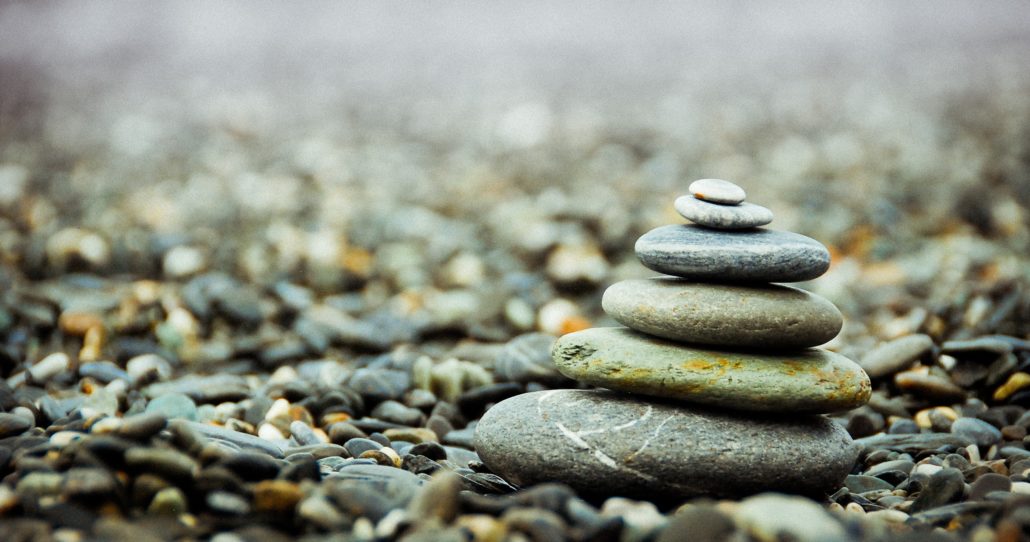
Now that the leftovers in the fridge are all that remain of Thanksgiving 2021, let us not neglect the practice of gratitude for the next 11 months. Why is this important? Developments in research support that gratitude has significant psychological, physical, and social benefits. Gratitude has been linked to reduced symptoms of anxiety and depression, enhanced mood, and increased positive emotions and thoughts. It has also been found to be an effective coping strategy for caregivers or individuals who have experienced a traumatic event or life change. Physical improvements include reduced stress response and pain and improved blood pressure, glycemic control, immune response, and sleep quality. From a neuroscience perspective, gratitude increases the happy brain chemicals, regulates the stress hormones, increases activation of the bliss centers of the brain, and promotes cognitive restructuring. Research also suggests that adopting gratitude practices can promote better communication, empathy, healthier relationships, team dynamics, and workplace efficiency and productivity. Communicating thankfulness to others promotes relationship bonding and connection. With all this evidence, why would we not want to tap into this wellness super power?
Let us strive to cultivate a lifestyle of gratitude all year round with these practical tips:
Have you found strategies that help you and your family to keep a focus on gratitude throughout the year? Share with us your strategies and tips below!
By Dr Ali and Dr Kat
Hey families! Are you looking for fun, outdoor activities in the changing weather that will challenge your kiddo’s motor system? Well look no further, because we have the most fun, festive, fall activities RIGHT HERE!
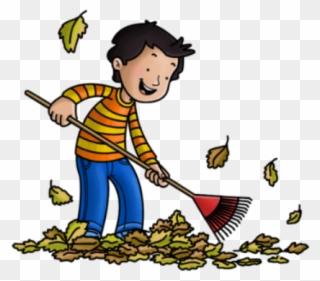 Rake the leaves: Help mom and dad out by grabbing a rake and raking all the leaves into one pile. Using a rake is a great gross motor activity because you have to use two hands together while turning your upper body to rake successfully (aka you have to use your core muscles). You need to do this while holding your lower body stable, working on balance while working on your kiddo’s core at the same time!
Rake the leaves: Help mom and dad out by grabbing a rake and raking all the leaves into one pile. Using a rake is a great gross motor activity because you have to use two hands together while turning your upper body to rake successfully (aka you have to use your core muscles). You need to do this while holding your lower body stable, working on balance while working on your kiddo’s core at the same time!
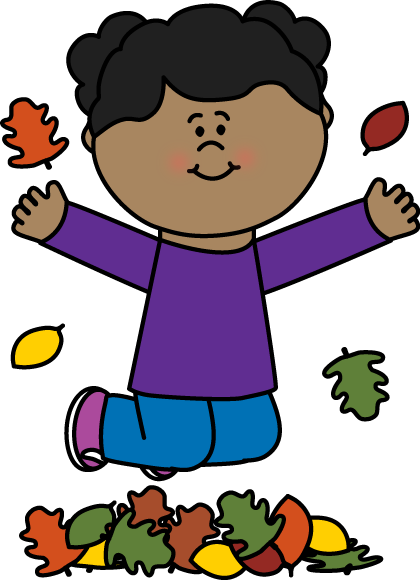 Jumping in the leaves: Leaf jumping is so much fun! Make sure that there is a big pile to jump in first, then run and JUMP into the leaves. You can try all kinds of jumps here: a traditional jump which includes a two footed take off and two footed landing, a leap where you start on one foot and land on the other foot, or a hop where you start on one foot and land on the same foot! There are so many possibilities.
Jumping in the leaves: Leaf jumping is so much fun! Make sure that there is a big pile to jump in first, then run and JUMP into the leaves. You can try all kinds of jumps here: a traditional jump which includes a two footed take off and two footed landing, a leap where you start on one foot and land on the other foot, or a hop where you start on one foot and land on the same foot! There are so many possibilities.
 The Squirrel Hop: Squat down low to the ground with your hands on the ground too (kind of like a frog). Now jump your hands forward and then jump your feet to your hands to hop like a squirrel (think like a frog jump!). Do this jump all over the house and make it even more fun by adding acorns to the mix and hide your acorns all around the house (but don’t forget where they are!)
The Squirrel Hop: Squat down low to the ground with your hands on the ground too (kind of like a frog). Now jump your hands forward and then jump your feet to your hands to hop like a squirrel (think like a frog jump!). Do this jump all over the house and make it even more fun by adding acorns to the mix and hide your acorns all around the house (but don’t forget where they are!)
 Nature walk: Enjoy a family outing with a walk at a nature trail or local park. Encourage curiosity about wildlife and the plants you come in contact with by using nature bracelets. Simply wrap duct tape loosely around your child’s wrist with the sticky side facing out. When they find a leaf, flower, or small item that they are interested in, they can pick it up and stick it to their bracelet. (Make sure to educate your kiddos to stay away from poison ivy though.) By the end of the walk, let everyone showcase their bracelets.
Nature walk: Enjoy a family outing with a walk at a nature trail or local park. Encourage curiosity about wildlife and the plants you come in contact with by using nature bracelets. Simply wrap duct tape loosely around your child’s wrist with the sticky side facing out. When they find a leaf, flower, or small item that they are interested in, they can pick it up and stick it to their bracelet. (Make sure to educate your kiddos to stay away from poison ivy though.) By the end of the walk, let everyone showcase their bracelets.
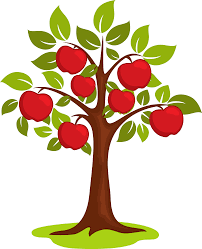 Apple Tree Balance Act: Draw the outline of a tree with chalk on your driveway or sidewalk and scatter “apples” on each branch that they have to gather. For apples, you can use real/ toy apples, pom poms, bean bags, leaves, small balls, or anything you find nearby. Have your child keep their feet on the chalk lines as if they are walking on a tightrope and keep both feet on the chalk as they squat to pick up the “apples.” Increase the challenge by having them do it backwards/ sideways, touching elbow/ hand to opposite knee with each step, or incorporating “apples” of varied colors that they need to sort into different baskets.
Apple Tree Balance Act: Draw the outline of a tree with chalk on your driveway or sidewalk and scatter “apples” on each branch that they have to gather. For apples, you can use real/ toy apples, pom poms, bean bags, leaves, small balls, or anything you find nearby. Have your child keep their feet on the chalk lines as if they are walking on a tightrope and keep both feet on the chalk as they squat to pick up the “apples.” Increase the challenge by having them do it backwards/ sideways, touching elbow/ hand to opposite knee with each step, or incorporating “apples” of varied colors that they need to sort into different baskets.
Do you have any other fall fun activities to share? Post them in the comments!
Why shouldn’t health literacy start early? Here at KidPT our biggest goal is to empower our families and kiddos to be independent in order to achieve their best lives. Health literacy is one of the building blocks necessary to achieve independence. By having kids understand their body: how it works, how it communicates to them, and how to manage their basic health needs; they will be prepared to be advocates for their health. Ideally, we want our kids to learn how to
live lives in which they prioritize their wellness and have the competence to make smart and informed health decisions in the future. We know from research that we learn best when activities are fun and engaging as our brains are more active. One easy way to start introducing learning about the human body is through story time. Welcome to our health literacy book corner. Below is a list of books for kids of various academic levels that are fun resources that give basic understanding of how our bodies work.
Listening to My Body by Gabi Garcia.
The first line of this book is “My body is my friend.” This sets the stage for the book’s goal to develop a relationship with your body. We meet a boy who teaches the reader how to listen to body sensations and emotions. He also provides strategies on how to manage these sensations and feelings to promote success with everyday activities.
Look inside your body by Louie Stowell
This is an interactive book as it is filled with flaps so that you can see inside the body and look at the different organs and parts. It provides various facts on how the organs work and what they do to all interact together to allow us to function as humans.
Give me back my bones by Kim Norman
This book introduces the reader to the names of the different bones of the body with a story of a skeleton whose bones got scattered through the ocean. It is appropriate for most ages as it includes fun rhymes and pictures.
100 Things to know about the human body by Alex Frith, et al.
This book is sure to feed a love for learning as it provides countless and in depth fun facts related to the human body with stimulating visuals. This is a perfect
book for our curious kiddos who love facts.
Shine-a-light: The human body by Carron Brown and Rachael Saunders
You and your child become explorers of the human body with this book. It is exciting because the reader uncovers hidden features under the skin of the
characters in the book. Shining a light behind the page reveals the bones, nerves, lungs, heart, vascular system, a baby in the womb, and so much more.
You and your little ones will enjoy discovering what is under the skin and how each organ helps us to function.
This series of books provides a great introduction to learning about the heart, brain, and the various parts of the cell. It is interactive to promote learning and
understanding. The neurology book is our favorite.
The Fantastic Body: What Makes You Tick & How You Get Sick by Howard Bennett
This is a funny and engaging reference book on everything related to the body. It provides in depth and easy to understand visuals to promote learning and
interest.
Cutie Sue Fights the Germs
Cutie Sue and her brother are sick. She will share with you what she learns about personal hygiene, how to handle doctor visits, and strategies to boost the
immune system and fight being sick. This is a great story to promote wellness and taking care of your body.
We hope you found some fun and interesting books in this list that you can read together with your children. Do you have any favorites to share with us? Comment below!
